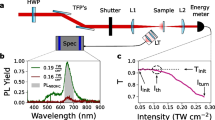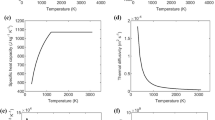Abstract.
The rate at which conduction-band electrons (CBE) absorb laser energy is calculated by both the quantum mechanical and the classical methods. Here fused silica irradiated with a 780-nm femtosecond-pulse laser is used as an example. It is found that the rate obtained by the quantum mechanical method is about one-third of that by the classical method, and it is much less than the direct-current limit. In the flux-doubling model, the avalanche rate in fused silica is 4 I ps-1 obtained by the quantum mechanical method, while it is about 13.7 I ps-1 by the classical method, where the laser intensity I is in units of TW cm-2. The differential equation of the evolution of CBE density is solved numerically, and it is found that the combination of CBE–hole recombination, CBE diffusion and initial CBE density (<1013 cm-3) is not important. The dependence of avalanche breakdown threshold on laser-pulse duration is presented. The threshold calculated by the quantum mechanical method agrees well with experimental results, while the threshold obtained by the classical method differs greatly from the experiments.
Similar content being viewed by others
Author information
Authors and Affiliations
Additional information
Received: 18 December 2000 / Accepted: 27 April 2001 / Published online: 27 June 2001
Rights and permissions
About this article
Cite this article
Jia, T., Li, R., Liu, Z. et al. Threshold of femtosecond laser-induced damage in transparent materials . Appl Phys A 74, 503–507 (2002). https://doi.org/10.1007/s003390100903
Issue Date:
DOI: https://doi.org/10.1007/s003390100903




